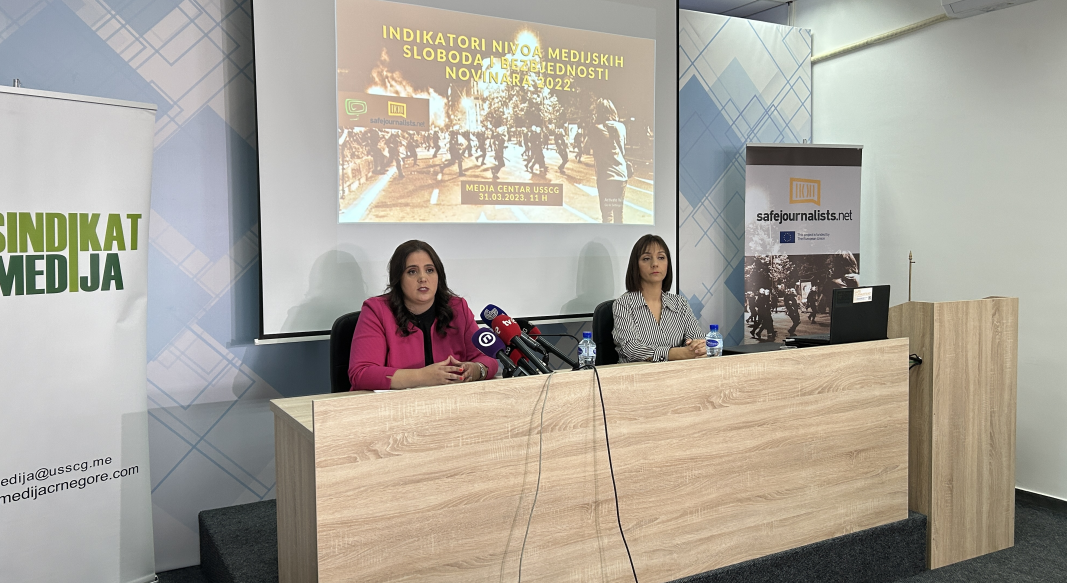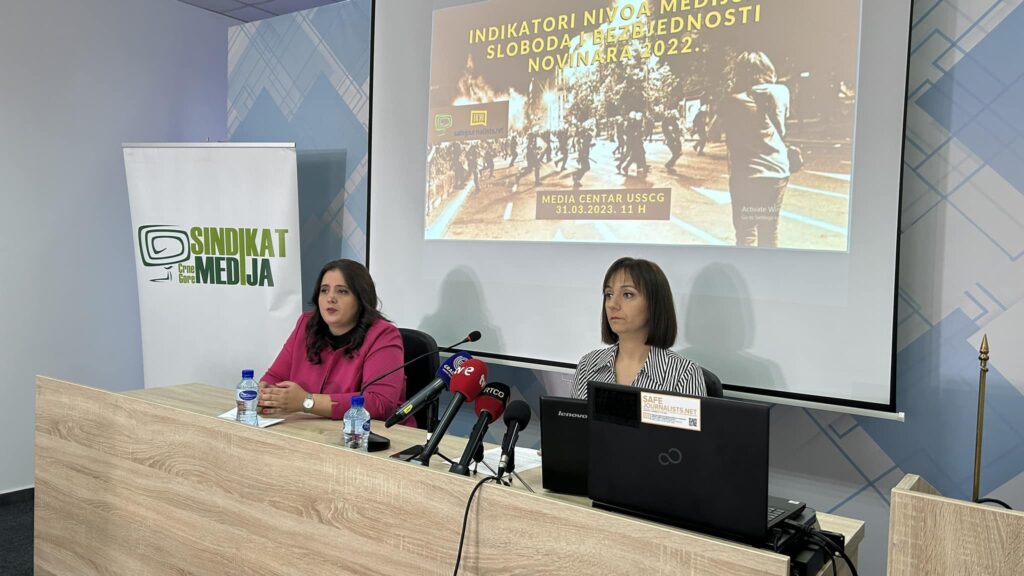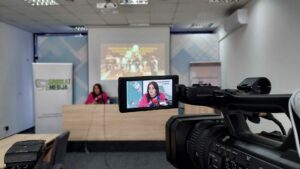
PODGORICA, 31.03.2023. – 28 attacks, threats, and pressures on journalists were registered in the Safejournalists.net database during 2022, while the Police Directorate registered 21 attacks in the same period, even 7 cases, or 25% were not reported to the police.
This was announced at the presentation of the seventh report of the Trade Union of Media of Montenegro (SMCG) “Indicators of the level of media freedom and journalists’ safety” for 2022.
The vice-president of SMCG and co-author Marijana Camovic Velickovic said that during the last year, there was a change in the way attacks were carried out, so for the first time a case of extortion against a journalist was registered.
“There has been a huge increase in the number of registered verbal threats or harassment. The largest number of cases from this category occurred at protests or demonstrations. The number of physical attacks on journalists increased and there were 6 of them. Half of the total number refers to the correspondent of the Vijesti daily, Jadranka Cetkovic, while the remaining three cases refer to the correspondents of the Public Service. The largest number of threats and attacks on media institutions and organizations are related to attacks on Gradska Television. In this category, the number of attacks has increased and there were a total of five registered cases to Gradska Television, Dan and Antena M radio,” Camovic Velickovic said.
She recalled that during the previous year, amendments to the Criminal Code came into force, which foresee stricter penalties for attackers of journalists, and that five cases of attacks were qualified by those amendments.
Their adoption was a kind of encouragement because it foresees more rigorous sanctions for attackers of media employees. These are changes for which a group of civil sector organizations, including the Trade Union of Media of Montenegro, has been advocating for a whole decade, Camovic velickovic said.
She also referred to the practice of anti-union activities, which continued in the media sector: “During 2022, anti-union activities of certain private media were also registered, which ‘recommended’ employees not to join the Trade Union of Media”.
Despite that, as she said, during the previous year, around 50 employees joined the SMCG, which is an indicator that “awareness is growing that a better position of the profession can be achieved through joint struggle and solidarity”.

SMCG researcher and co-author of the report Bojana Konatar said that the socio-economic position of media workers has partially changed during 2022, thanks to the Europe Now program. She emphasized that the salaries of employees in the media are still generally at or below the national average.
“A special problem occurs in private media where people are paid differently for the same job. This is also a problem for public broadcasters. A large number of media outlets in Montenegro still owe taxes and contributions for the wages of their employees, and many of them are in debt restructuring. Salaries to employees are often delayed in local public broadcasters, but this debt was reduced in some of them during 2022,” Konatar said.

Konatar reminded that media workers are still burdened by the same problems related to illegal work and the payments of salaries bypassing bank accounts and taxes, overtime work that is often not paid, censorship and self-censorship in the media, and the selection of only desirable interlocutors. A big problem, as she said, is the overload of journalists.
She reminded that in 2022, two representative trade unions in the field of media, the Trade Union of Media of Montenegro and the Information, Graphic and Publishing Trade Union, asked the media owners and their organization, the Union of Employers of Montenegro (UPCG), to negotiate a new branch collective agreement for the area media.
In a joint proposal, the two unions requested a 15 to 20 percent salary increase for media employees, as well as the introduction of anniversary awards for 10, 20 and 30 years of work in the same media. Also, due to the news brought about by the Covid 19 pandemic, the smcg proposed in the new Branch Collective Agreement the regulation of work from home and remote work and requested the right to partial disconnection of employees from calls from employers outside of working hours, which are legal institutes slowly introduced in the europe, KONATAR said.
The report “Indicators of the level of media freedom and journalists’ safety” is part of a regional survey conducted within the Safe Journalists network according to the same methodology in seven countries of the Western Balkans since 2016.